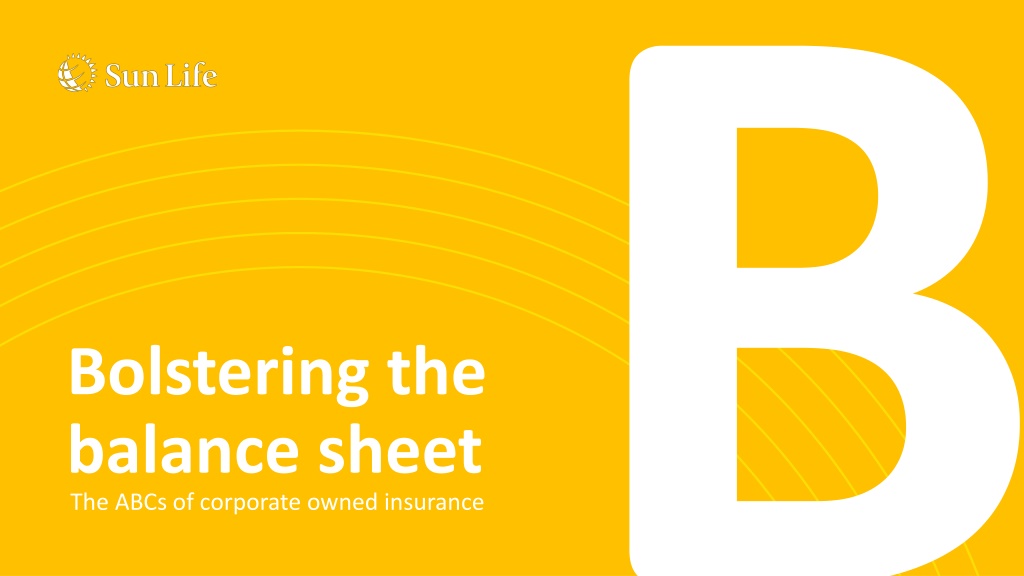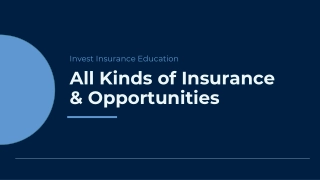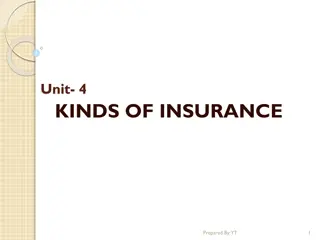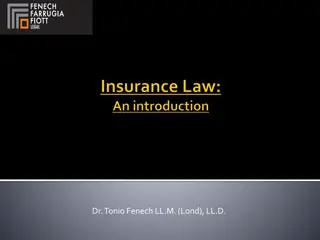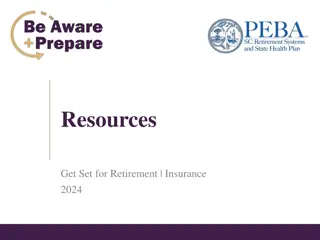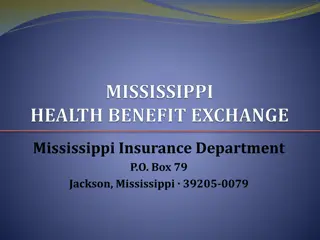Understanding the Benefits of Corporate-Owned Insurance for Balance Sheet Improvement
Explore the advantages of utilizing corporate-owned life insurance to strengthen the balance sheet of a business. Discover how it can minimize corporate and personal taxes, enhance liquidity, and serve as an alternative asset class. Learn through practical case studies and insights on leveraging insurance for financial capital preservation.
Download Presentation

Please find below an Image/Link to download the presentation.
The content on the website is provided AS IS for your information and personal use only. It may not be sold, licensed, or shared on other websites without obtaining consent from the author. Download presentation by click this link. If you encounter any issues during the download, it is possible that the publisher has removed the file from their server.
E N D
Presentation Transcript
Bolstering the balance sheet The ABCs of corporate owned insurance
Its not what you know but what you don t know Understanding the opportunity A simple balance sheet It really boils down to the impact on the balance sheet of the corporation. Total Liabilities Current liabilities + Non-current liabilities Total assets Unfortunately the balance sheet is often ignored and with it the opportunity! Current assets + Non-current assets Total Shareholder s Equity Share capital + Retained earnings
Todays Agenda Bolstering the balance sheet 1.The main idea 2.Considerations for accountants 3.Case in point
The Main Idea Benefiting from corporate owned life insurance Used well, life insurance provides an opportunity to help solve these significant problems for business owners: 1. Minimizing corporate tax during lifetime 2. Minimizing personal tax at death 3. Maintaining or improving liquidity for business
Financial Capital The legacy of the wealthy Insurancecan help protect the value of one s net worth from taxes & market risk. 1. Fund tax liabilities 2. Tax-effective transfer of assets from a corporation 3. Alternative asset class to enhance balance sheet
What taxes? The power of the Capital Dividend Account (CDA)* Full Death Benefit (DB) will pass through CDA around life expectancy *Sun Par Accumulator life pay, 1 million of DB, 10 premiums, max plus premium for MNS50
Its a balance sheet discussion Permanent insurance as a corporate asset No cash = no liquidity Liquidity in year 1 Premium = negative income Positive income effect in year 4 Net asset on balance sheet in year 7 Never an asset on balance sheet
Working this out in practice A case study: meet Charles o Charles male, aged 50, non-smoker o Owns a business and has implemented a freeze - Fixed shares with Adjusted Cost Benefit (ACB) of $5 million and paid up capital of 0 o Daughter will inherit business - Subscribes for new common share worth $100 o Planning process reveals $5 million insurance need
Working this out in practice A case study: permanent insurance as a corporate asset Term 20 o Smallest premium o Does not address need Par early Cash Surrender Value (CSV) o Asset o Addresses all needs T100 UL o Not an asset
Working this out in practice A case study: self funding What if Charles invested the Par premium at 3.5% ($351,225 for 10 years)? Net estate benefit on death AGE INVESTMENT (SELF-INSURANCE) PARTICIPATING POLICY INSURANCE ADVANTAGE 70 $3,161,875 $8,566,946 $5,405,071 25 years before the investment breaks even! 80 $4,005,760 $9,425,981 $5,420,221 90 $5,009,514 $11,073,771 $6,064,257
Working this out in practice A case study: is there a place for low CSV? Challenge Higher ACB lower net to estate Low or Nil Cash Value Reduces value of corporation at death (lower terminal taxes, higher net estate value) Cash value may affect ability for shares to qualify as Qualified Small Business Corporation (QSBC) shares used for lifetime capital gains exemption and Tax on Split Income (TOSI) Guaranteed product may not require cash value to fund premiums Solution Optimize CDA ACB rider
For more information Check out the full version of Bolstering the balance sheet
